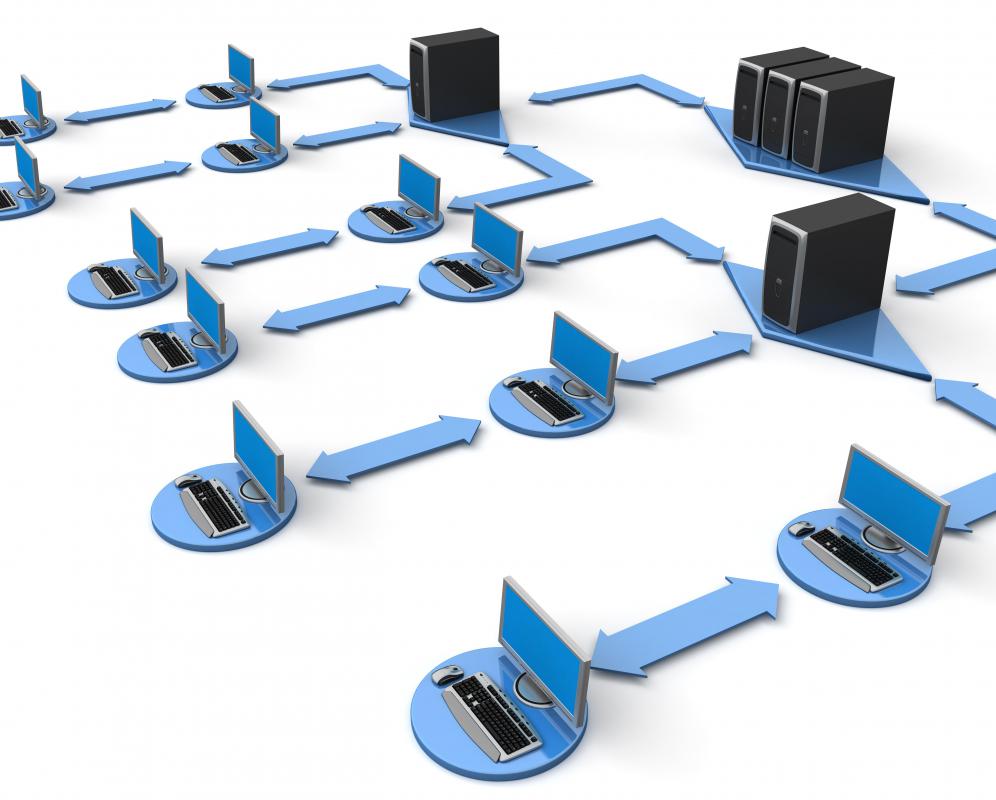At WiseGEEK, we're committed to delivering accurate, trustworthy information. Our expert-authored content is rigorously fact-checked and sourced from credible authorities. Discover how we uphold the highest standards in providing you with reliable knowledge.
What Is a Fiber-Optic Switch?
A fiber-optic switch is a communication control device that is used in computer networking. It is also used to control electrical devices. Instead of connecting to traditional copper wiring, a fiber-optic switch connects to fiber optic cables or wiring to improve capacity, speed and safety.
Computer networks may use a fiber-optic switch to send and receive data transmissions. The switch is responsible for determining where each data packet needs to sent on the network. It is similar to traffic control lights that need to direct traffic at a busy intersection. A switch can and does let certain data packets through while putting a pause on others until there is enough capacity on the network.

The use of traditional copper wire switches can lead to capacity issues, especially in the case of larger networks or information that needs to travel between two points separated by greater distances. Also, in some geographical locations it may be better to choose a fiber-optic switch. This type of switch is typically safer in areas that are prone to heavy storms and lightning, for example.

Higher bandwidth is an advantage of a fiber optic network, in addition to the decreased likelihood of transmission interference from outside devices. The speed of data transmissions tends to be quicker with a fiber optic connection. There are several different versions of fiber optic Ethernet switches available for use, depending upon the type of networks that need to be connected. Fiber-optic switches are manufactured to connect only with other fiber optic networks or copper networks.
Household based electrical devices can also employ the use of a different type of fiber-optic switch. The switch typically operates from an electrical socket in the home and connects to a device that uses electricity to operate, such as a lamp. Instead of using traditional electric wires, a fiber-optic connection is used to enhance safety. It has a distinct advantage over traditional switches in areas that are exposed to water, such as a pool or hot tub.
A fiber-optic electrical switch controls power to an electrical device. It sends communication signals to the device to either turn on or off. The communication to turn the device on or off is transmitted over a fiber-optic cable. Electrical switches can be installed in a structure's wall or floor, depending upon the make and model. Areas that can easily corrode a traditional switch, such as a swampy terrain or a locale with high humidity, are ideal for the use of fiber optics.
AS FEATURED ON:
AS FEATURED ON:












Discussion Comments
It is also important to know what purposes you're using your fiber optic switch for. If you are looking for highly technical manufacturing applications you should look into "single mode" optical wire option. The wire is actually more narrow than the "multi-mode" option and can travel longer distances.
If you're basically looking for home electronic interaction, multi-mode might be good for you.
Post your comments